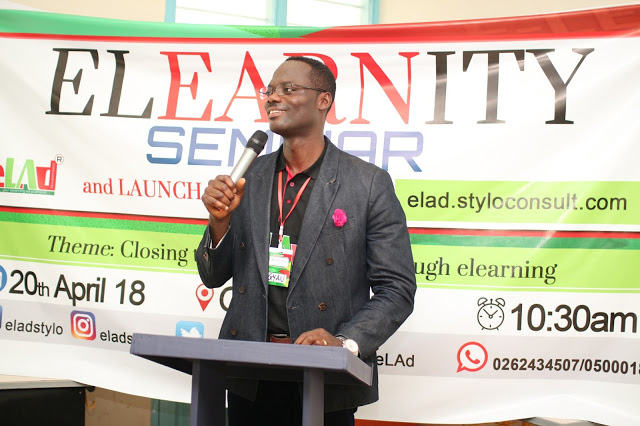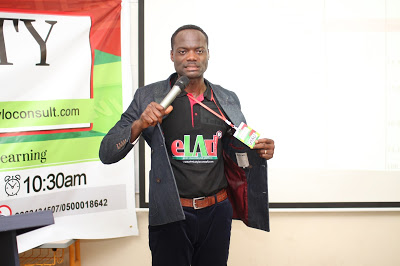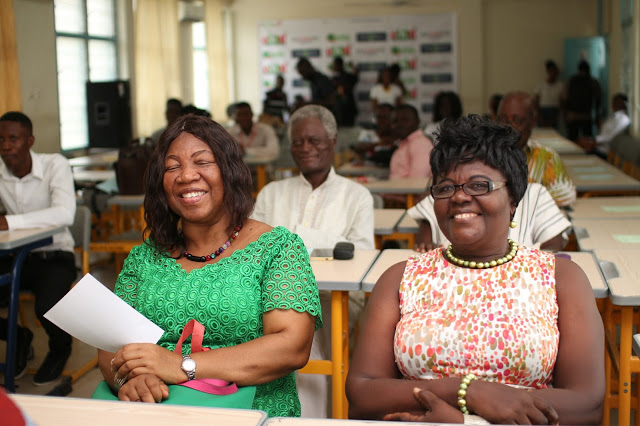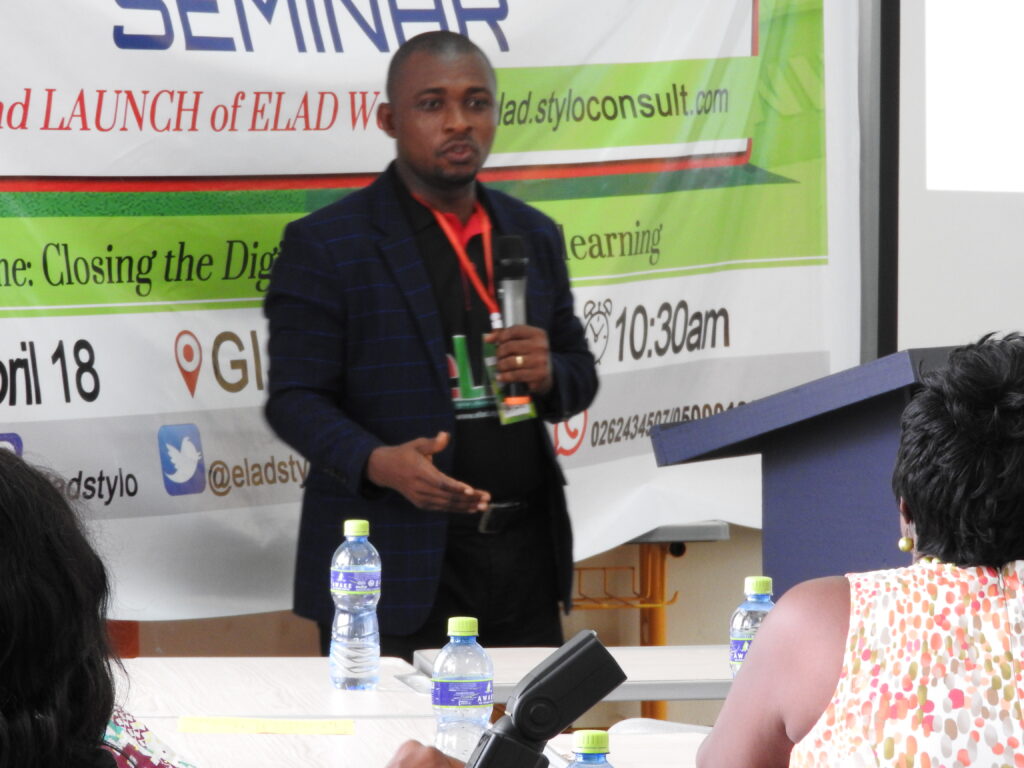
Ready, one, two, three, ready, gooooo! This sounds familiar, right? Yes, it is what is often shouted to kickstart most racing games. However, this time around, it is for the long-awaited reopening of our schools.
Schools are resuming in January 2021. That is not to say that some schools are not in session, but the focus here is that majority of the schools will be in session in 2021. To some students, it is a great relief filled with joy. A period to reunite with friends, and enjoy the physical space of the campus. It has been months since schools were locked down. On the other side, others would have still preferred to continue their online studies from home.
But the question still holds, why are some happy and others sad about the reopening of schools? Well, I guess those excited are looking forward to the opportunity to experience physical interaction with teachers and lecturers, meet with long-time friends, and appreciate the physical school setting.
To the other group, staying at home was just the best experience as they had more time to spend with family and fulfill other commitments.
While students may have varied reasons for missing or not missing school, the fact remains that schools will be in full session from January 2021.
It is exciting to know that I can finally go back to school after staying home for almost nine to ten months. Let me quickly state that while at home, I had the opportunity to join an online class organized by my school, but the issue is that it hasn’t been efficient at home.
Staying at home came with hurdles such as boredom, which did affect my mental health, change in eating patterns, and fear of contracting the virus. I remember informing my immediate family members the importance of our hands frequently and doing it the right way. The news on the spread of the virus spearheaded by our media platforms frightened me. It got me depressed. The alarming death tolls of COVID-19 shook me to the core. These uncertain times motivated me to pray more, this is not to say I don’t pray, but I poured out my depression through prayer.
Before I forget, I had a series of incidents that fueled my depression, but that will be a story for another day.
In the meantime, I realized I was not myself and was getting moody all the time, but my mum was there to encourage me. She always prayed for me and assured me everything would be fine. She emphasized that I should never let the thought of me contracting COVID-19 grow in my mind. She canceled it with the name of Jesus. You know how refreshing it is when you have a prayerful Mum and a motivator. Her assuring words light me up and give me the needed strength not to be afraid of all that is happening around me.
In a bid to solve all that I was going through, I took a sabbatical leave from social media and ceased following COVID-19 stories. I channeled my energy and mind to what I loved doing best. I took strolls, learned new recipes, and guess what called some very few friends to chat. I also joined some online activities and started an online show called #FridayFeelingTips, where I get to share what I had learned in a week with others, and it cut across all topics from health to education, and you name it. It was a weekly show, so I had to learn new things to share with my audience.
So, do you understand why I said it wasn’t easy for me now?
Based on all these experiences, I have been able to get over it because I had some support.
However, the thought of some students still going through tough times keeps ringing in my mind. But what can we do about it now that school is re-opening? From my point of view, physiological support should be targeted to all students in school. This can be fulfilled with the assistance of teachers or lecturers. In schools with mental health clubs, they can assist with initiatives that will improve the well-being of students.
Secondly, various educational stakeholders should help reduce the school fees for this academic year. It has been a tough year, and economically many have been affected. A conscious effort to help reduce the school fees will go a long way to relieve students.
Lastly, all protocols on COVID-19 should adhere. Hygiene practices should be encouraged in schools. The school washrooms should have the necessary hand washing material. Similarly, there should be basins and soaps at vantage points on campus to help students wash their hands. This practice should be consistent.
Wearing of nose mask should be encouraged. Students should save lives by wearing a mask.
To wrap it up, my friends, I know we miss each other so much but let’s refrain from the hugs and all other close contacts so that we don’t contract the virus and infect other vulnerable people we are living with. It takes us all to make school safe and have a smooth transmission back to school.
]]>
Ghanaian actor, writer, and author is out with a new book titled MY COMPANION. The actor who released his first novel titled Beyond The Grave in 2017 is out again with another masterpiece. My Companion story follows a young pretty lady called Ohemaa Nyarkoa Rockson who thought her beauty alone is what will make her whole life complete, little did she know that there is more to that. Not to bore you with details, grab a copy, and read for yourself. It’s a must-read. The novel which also will be put in a movie in the nearby future is available at these places for sale.1. PAWA House, Ghana Association of Writers.Contact 0302732019 | 0240377980 | 05423303952. Amazon in Paperback & Kindle editions3. Tema Comm 11BookShop near Datus School.Contact: 05534400434. Print Innovation Contact: 0267771670 | 0551298311Or WhatsApp Isaac Kofi Arthur on 0246518593 or 0268334938Book Price: 60 Ghana cedisAuthor: Isaac Kofi ArthurBelow is a full synopsis of the story My COMPANION Synopsis. Over pampered from childhood by her mother, the attractive but lazy Ohemaa Nyarkoa Rockson @portia_freelove finds herself in a beautiful marriage she had always dreamt of. The marriage is thrown on rocks and her beauty alone is not enough to save her. In an era where men are naturally attracted to women who are good home managers, what will happen to Ohemaa Nyarkoa as she faces this muddle in her marriage? Will her helpmeet break his “for better, for worse” vows or will he be a man of his words when he finds out about his wife’s woeful inability to perform simple home tasks? He who finds a wife, finds a good thing – but what if she is not good at all? RELATED TOPICS: ISAAC KOFI ARTHUR
BEYOND THE GRAVE – NEW BOOK
ONLINE STUDIES, A BLESSING OR A CURSE!
Globally 1.5 billion students have been affected by Covid-19 due to the closure of schools. In Ghana 9.2 million basic school students have been affected (kindergarten, primary and junior) and 0.5 million tertiary students according to UNESCO.
The onset of Covid-19 also known as the global pandemic has had impeccable effects on the world. From employment to education, health, agriculture and just to mention a few have had a share of their effects. Some of the sectors that have been severely stricken worldwide are education and employment.
The pandemic has changed the face of education by introducing “school at home” where students learn online. For some, they resort to television and radio to catch up with studies. This novelty is considered digital learning or virtual learning. This virtual learning is enhanced through utilizing computers and/or the internet both outside and inside the facilities of the educational organization. In instances where students are not able to have access to any of these mediums for learning, what is the alternative? Whereas some parents have employed the services of teachers to help their wards, other children are left to wander without any means to learn.
For people like myself who had the chance to continue my studies online, I was posed with an array of problems such as, bad connectivity, expensive data packages, unstable power supply, and even the needed materials to access these learning sites. In Ghana, when schools were closed, and it was announced that students will be studying online, a lot of students through the Representative councils raised concerns about the connectivity to these online sites. Students demanded that schools provide a data bundle that will help in accessing these sites. While some schools heeded their call by providing the data, other schools with the authorities paid a deaf ear to their demand leaving students to their own fate. I remember having to wake up sometimes as early as 1-3 AM dawn just to submit my exams due to poor network and unstable school portals. Some of my colleagues even missed out on submission dates because of the poor internet and had to suffer for something which was no fault of theirs. The shift to digital learning without the requisite resources gives me a nightmare when I recall my challenges. I will still suffer the same fate due to knowing that we will be subsequent online interactions and less offline interactions.
The main aim of the Sustainable development goals underscores on leaving none behind. This goal can be undermined by the abrupt use of online learning space that countless number of people are not having access to.
In a time of crisis and uncertainty like the present, digital learning has come to stay. As a matter of urgency, young people need digital skills to embrace this digital world.
There should be an investment in digital skills development for all young people which is inclusive enough and targeted. The use of digital technologies for education and skills development needs to be strengthened to provide a comprehensive approach towards the empowerment of all young people. Teachers, tutors, and lecturers need to be motivated and empowered with digital skills.
To conclude, young people need to make efforts in developing and building on their digital skills during this era. We the young people have to also build soft skills which will also help us get quality education and employment. Young people in entrepreneurship also needs to build on their skills to scale up their work. Above it all, discipline is required of us as young people in all spheres to be productive during these times as things become more and more challenging.
We all have a role to play in recovering all lost efforts and each one involved has to play their role well.
]]>| The process of IT integration within education services has been linked with the innovation diffusion process (Rogers, 2010). This theory is widely used in research to understand the state of ICT integration in universities. According to Sahin (2006), the theory of innovation diffusion is the most appropriate concept for exploring the integration of IT into higher education services |
|
This is premised on the fact that: Stage 1: Individuals have different characteristics that follow a set of stages to integrate a particular IT system/innovation (Ankem, 2004; Kirkup & Kirkwood, 2005; Tabata & Johnsrud, 2008). These characteristics and a set of stages. This is also confirmed by the TIM which has 5stages and 5 corresponding activities. |
|
Stage 2: The potential perceived value of innovation will affect the individual’s decision on whether to adopt it at an early stage of the integration process or not to adopt it. Thus, in order to speed up the innovation process across university services, staff and students must be prepared to adopt emerging forms of IT with minimal or no resistance to change. The perceived value of innovation like tech and how it can affect the decision to adopt or reject technology at an early stage or not. The alternative is Resistance to change. |
| Stage 3: The integration of IT within educational activities starts with the awareness of a newly introduced technology and then proceed with the formulation of attitudes towards this technology. That individuals, in spite of their varying characteristics, will FORMULATE ATTITUDES towards IT integration. |
| Stage 4: The last stage of the diffusion of innovation is the confirmation (stage) of using a new technology to improve university services (Rogers, 2010; Sahin, 2006). The Confirmation stage of using technology. At the confirmation stage of an innovation diffusion process, institutions are able to gain an innovative value addition and increase their return on investment in IT. |
| Within a university setting, faculty, students and administrators may have distinct characteristics that can affect the integration of IT. Therefore, an understanding of these characteristics can form the basis for preparing them to be fully involved in the initial stages of the innovation diffusion process. |

The Maiden Elearnity Seminar was successfully launched on Friday 20th of April 2018, at the Ghana Institute of Journalism, Accra, with the theme “Closing the digital Divide through E-learning”. This seminar was organised by Mr. Yaw Odame Gyau and the Estylo club, where he introduced the Brand name ”Mr. Elad”. Mr. Elad, explained that Elad was derived from two words;
Elearning and Advertising.
He emphasized the need for studying advertising electronically since Elearning is fast becoming the learning pedagogy of the future. Resource persons include Doctor Hilla Addo, the Pro-Vice, for Lucas College, and Mr. Sylvester Hatsu, Snr. Lecturer and H.O.D of I.C.T department, Accra Technical University, Mr. Yaw Odame Gyau; Snr. lecturer, Advertising, Ghana Institute of Journalism and Nana Oppong Mensah a representative of Google and Co-founder of Wineloya Digital Advertising delivered lectures on E-learning.
Dr. Hilla Addo spoke about Bridging the digital divide between Academia and Industry: The case of Lucas college. Mr. Yaw Odame Gyau also delivered a lecture about the need for elearning tools to be integrated into main stream education in tertiary communication universities. Mr. Sylvester Hatsu spoke about Hacking Humans: Social engineering and how to protect against them and Nana Oppong; spoke on “Google Digital Skills”. The programme was also used to launch the Estylo club as an official Elearning club on Campus and also the unveiling of the Elad, Elearnity, SMART MODELS and Estylo logos
Estylo is the E-learning club on campus, Elearnity is the seminars that will be organizing periodically, Elad is our working hub where communication and media courses will be taking place and the SMART MODELS is how Apps will be used to solve communication problems the smart way.
Join our Seminars, Join our e-learning club and visit our website eladhub.com
Take our lessons, drop your comments and share with other learners.
Find us on FB…eladhub Twitter….@eladstylo Instagram…..eladstylo Youtube….estylo elad











Delivered a lecture on E-learning for Higher education 
Cyber Fraud expert
Abstract
Advertising recall is one of the categories of measures of the cognitive response which have been developed. What remains a dilemma to advertisers is whether there is a correlation between recall of advertising and brand preference or not? This study sought to determine the relationship between advertising recall and brand preference among young communication students in Accra. Expectancy Value Theory and Media System Dependency Theory were used. The study adopted simple random sampling procedure to respond to two propositions: 1. There is no relationship between advertising recall and purchase of product or service; 2. That there is no relationship between advertising recall and brand preference. Findings indicate that relationship between advertising recall and brand preference is significant. Majority of the respondents also emphasized that, in the future, their next choice of brand will be based on ‘efficiency of service’.
____________________________________________________________________
Keywords: Advertising Recall, Brand preference, Television Commercials (TVCs).
]]>
Dr. Hillar Addo: LUCAS College, Accra. [email protected]
Yaw O. Gyau: Snr. Lecturer/H.O.D Advertising. Faculty of Public Relations and Advertising, Ghana Institute of Journalism, Accra Ghana. [email protected]
Abstract
This study investigated blogging as an e-learning tool and the level at which it is becoming a medium for teaching and learning in communication tertiary institutions in Ghana. The study considered four theories; e-learning/online learning models; constructivism, interactivism, and connectivism to provide a context for the use of instructional technology, focusing on communication training institutions in Ghana. Using a quantitative methodology, the study adopted multi-stage sampling procedure to respond to three propositions: 1. Students who have blog sites are more comfortable with lecturers who use blogging as an e-learning tool for teaching and learning. 2. There is a significant positive relationship between students with blog sites and Communication training Institutions that consider e-learning as a teaching and learning platform. 3. Having a blog site influences the career development of students from Communication training Institutions. Findings were that; tutors and learners casually use e-learning tools, majority of students and lecturers in communication training institutions in Ghana would appreciate utilising e-learning tools for the delivery of various learning modules, but it is sparingly, casually and occasionally used. The study also provided a new model within the context of active patronage of e-learning tools and blogging for teaching and learning in tertiary institutions in Ghana.
Keywords: E-learning, Constructivism, Connectivism, Interactivism, Blogging, Blogs, New Media, Tertiary Education
Introduction
A general problem in Ghana from the perspective of communication students and in the view of the researchers of this study is that, both tutors and students in tertiary institutions are caught in an e–divide and need to be trained and equipped with nascent skills. As the world evolves into the digital age, training of communication students has also evolved but has not seen much research to provide a context to this envisaged reality in Ghana. E-learning has become a household concept, and, blogs and e-learning tools are perceived as key tools contributing to the vibrancy of the online community, helping students to create a digital identity, and thus develop stronger linkages with people (Gotts, 2006). The realisation of e-learning as a learning domain is however quite puzzling and remains an illusion in tertiary institutions in Ghana where tools such as podcasting is making inroads into radio journalism. This research investigated training of communication students using bourgeoning e-learning technologies.
Objectives of the study were, to; determine the state of e-learning for teaching and learning in Communication Institutions in Ghana, examine the e-learning tools used among communication students in tertiary institutions, determine the creation and patronage of blogging as an e-learning tool in communication programmes in tertiary institutions and present a way forward in e-learning for future communication, and tertiary institutions.
Institutions used for the research were the Ghana Institute of Journalism (GIJ), Jayee University College (JUC), African University College of Communications (AUCC) and Christian Service University College (CSUC).
Literature Review
- Elearning, Blogs, Journalism and the Digital Divide
Almost every organisation in the developed world has become completely dependent on networks of telephony and computers. When they break down, the organisation simply stops working. At the societal and global level it is obvious that media and social networks reach various people or markets in the farthest corners of the world. The Internet and new media tools facilitate this phenomenon, as new generations of mobile or fixed telephony are fully digitalized and integrated adding text, picture or video (van Dijk, 2006).
According to Ventimiglia and Pullman, (2016), in today’s world, college/university graduates come into contact with a quickly evolving range of technologies and have access to a wealth of information. Students can be more successful after graduation if they are digitally literate—having learned how to identify and create digital solutions, adapt to new tools, and discover more effective and efficient ways of doing things in their fields. The term blog originated from the blend of the term “web log” and, the web provides the opportunity for people to easily set up their own blog and share their thoughts. Blogs are usually found in written formats to express a subject, issue or opinion that can be conveyed to an audience for a wide range of purposes, including personal, business, work and sharing news stories. (Ashraf and Lakhtaria, 2011)
Researchers of this paper hold the view that tertiary institutions mandated to train students to become professional journalists and public relation (PR) practitioners have a responsibility in the face of dynamic trends in tutelage fields, to expose students to new media and its tools to facilitate multimedia and digital communications. It is therefore, imperative in our view for tutors to engage learners in e-learning and blogging to prepare them for imminent social networking tasks.
Wasserman (2010), in his article …‘Teaching Critical Global Journalism’, stated that Journalism courses that approach students as if they can continue to work as an elite, professional class will have to reflect on how journalism has become a more collaborative field of practice.
Currently, integration of digital tools, training and the world of work is needed owing to globalization and the resulting interdependence between countries and market places (Kitchen et al., 2004; Schultz, 1996). While some are under control, others appear to be insurmountable. Hawkins (2002), in his work ‘Ten lessons for education in the developing world’, identified reasons why information and communication technology (ICT) education in Ghana is facing numerous challenges. In his introductory pages, Hawkins (2002) made the very insightful statement that:
The skills to productively transform knowledge and information into innovative products and services will define successful knowledge economies. Because knowledge and information have become the most important currency for productivity, competitiveness, and increased wealth and prosperity, nations have placed greater priority on developing their human capital. Governments around the world are thus focusing on strategies to increase access to and improve the quality of education.” Hawkins (2002). He writes further that;
A relevant education is more important today than ever, because today’s Networked World demands a workforce that understands how to use technology as a tool to increase productivity and creativity. These skills include “information reasoning,” a process in which reliable sources of information are identified, effectively accessed, understood, contextualized, and communicated to colleagues. Furthermore, employers require workers to have the skills necessary to collaborate, work in teams, and share information across global networks, that is, to analyze issues from a multidisciplinary perspective.” Hawkins (2002).
Addo, (2001) pointed out earlier that technology assists in increasing motivation to learn, and attentiveness.
Journalism and Public Relations are adapting to modern technological practices driven by the Internet. A study by Alfonso & de Valbuena (2006) of 120 corporate websites from six European countries in the US and Singapore found that the ‘use of Internet tools to build strong and solid relationships with the media is far from ideal. Dewdney & Ride (2006) suggested that new media was becoming the preferred term for a range of media practices that employ digital technologies and the computer in some way or another. Communication training institutions must therefore step-up training for learners by integrating Instructional technology and e-learning tools into the curriculum and allow it to dictate the pace of teaching and leaning. The justification is that learners graduating from communication training institutes acquire the requisite skills required for at least online journalism and public relations (Dewdney & Ride, 2006).
Wasserman (2010), stated in ‘Teaching Critical Global Journalism’, that Journalism courses that approach students as if they can continue to work as an elite, professional class will have to make way for reflection on how journalism has become a more collaborative field of practice.
Gotts (2006) reminds readers that ‘Blogs were seen as a key strategy contributing to the vibrancy of the online community, in helping students to create a digital identity, and thus develop stronger linkages with people they would never otherwise meet.
In her work The Digital Divide and what to do about it, Hargittai (2003) explained the term digital divide as:
… People’s actual use of the medium beyond merely having access to it. The “digital divide” is most often conceptualized in binary terms: someone either has access to the medium or does not, someone either using the Internet or does not; the “digital divide” to include a discussion of different dimensions of the divide focusing on such details as quality of equipment, autonomy of use, the presence of social support networks, experience and online skill.” (Hargittai 2003)
There seems to be a number of parts to Hargittai’s (2003) definition of the term ‘digital divide’ which precisely expose the problems that are faced in Ghana and for that matter Africa. In one part she identified access to (technological) medium and in the other, usage of technology. These are relevant because for e-learning to be successful in higher institutions of learning, there is the need for these two challenges to be dealt with. The latter part of the statement indentified social support networks, experience and online skill, as key variables to be discussed or considered in the digital divide.
In Africa, and for that matter Ghana, both tutors and students in tertiary institutions are caught in Hargittai’s (2003) divide and therefore, need to be equipped or trained.
- E-learning and Instructional Technology
Instructional Technology is as well identified and discussed as a subject matter from which e-learning and its related tools emanate, and Atwell, (2010), identified pedagogical structures powered by computer technology, as giving birth to two other methods of teaching which are; Andragogy and Mobigogy. The former regarded as pedagogy for adult learners, while the latter is regarded as mobile learning; education of the future.
To further strengthen the rationale for e-learning, online learning and distant learning, the researchers have identified that several theories and conceptual frameworks, alongside academic models, have been proposed and approved to guide or ensure the principles for creating, sustaining and operating such programmes. Notable among them are; the Model of Online learning, Constructivism and Connectivism.
Seals and Richey 1994, through the Association for Educational Communication and Technology (AECT), defined Instructional technology as ‘the theory and practice of design, development, utilization, management and evaluation of processes and resources for learning, throwing more light on theory, practice and process with the perspective of design, development, utilization and evaluation. (Seals and Richey 1994).
The beauty of instructional technology is that technological devices for teaching and learning can be customized or specially designed with specific features, to serve specific needs. For example, the brail and other learning devices have been created for visually impaired students to participate in teaching and learning. Instructional technology has more to do with direct application of technology in the acts of teaching and learning. (Mishra and Koehler, 2006)
Acording to (Cole, 2000), instructional technology also encapsulates online learning, which is gradually replacing conventional instruction because, online learning, makes use of the computer and the Internet with computer-based applications such as Internet browsers and other learning-platforms. Online learning allows participants to collapse time and space however, the learning materials must be designed properly to engage the learner and promote learning. Bonk and Reynolds (1997), reported that to promote higher-order thinking on the web, online learning must create challenging activities that enable learners to link new information to old: acquire meaningful knowledge; and use their meta-cognitive abilities; hence it is the instructional strategy, not the technology that influences the quality of learning.
Below is a detailed illustration of the Concept of the Instructional Technology Field by McGriff 2001.
Abstract
This study explored the perceptions and usage of Social Networking Sites (SNS) among tertiary communication students. It specifically investigated students’ perceptions about Social Media, their most preferred SNS, and the uses of social media among students. This study sought to determine the relationship between the perception of social media and the frequency of use of social media among young communication students in the Ghana Institute of Journalism, Accra. Theories underpinning the study are the Community of Inquiry model, Social Cognitive Theory, and the Uses and Gratification theory. The study adopted a simple random sampling procedure to respond to three propositions: 1. Students’ frequency in using social networking sites will not significantly relate to their research and learning. 2. That there is no significant relationship between frequency in using social networking sites and effective advertising of goods and services. 3. That there is a significant relationship between frequency in using social networking sites and perception of SNS among students. The study revealed that students perceived social media as an interesting tool useful for research and learning and concluded that communication students enjoy using social media but the use of the platforms for learning is limited. SNS was also perceived as a relevant tool for advertising and stimulating sales.
Introduction
The usage of Social Networking Sites (SNSs) has become a common phenomenon in recent times. These sites are internet based tools that facilitate communication and exchange of content in diverse ways due to globalization and advancement in technology. From the days of sixdegrees.com which was in 1997 (Boyd et al, 2007) SNSs have evolved with even much more complex uses and grown to engulf the world especially after the inception of Facebook in early 2004, now the largest SNS in terms of user base (Staticbrain.com, 2016).
Tham & Ahmed (2011) in a study examined the usage and implications for using SNS among college students. The results of the study revealed that female students spent more time on SNSs as compared to male students. In general, time spent on SNSs reduced as the ages of respondents increased. The importance of this study remains countless as it stands the chance of being a primary source of data in other related research.
Social Networking began in 1978 with the Bulletin Board System (BBS). Boyd and Ellison (2007) indicate that the BBS was hosted on personal computers which required that users dial in through the modem of the host computer and subsequently exchange information over the phone lines with other users at the other end. It appears that, historically, this was the very first system that created the platform for users to sign in and then be able to interact with each other.
The challenge is that the usage of SNSs has been of great importance to the lives of students. Students are getting more connected than before, making new friends, getting informed on issues, getting educated, and on the urge to stand up against systems or structures of power. However, there are some issues of interest that need attention. These range from time wastage, privacy, through to reliance on the internet and the loss of emotional and physical bonding. The purpose of the study was to unearth the perceptions of tertiary students about SNS; determine the most patronized SNS, investigate the positive and negative impact of SNS on tertiary communication students.
]]>